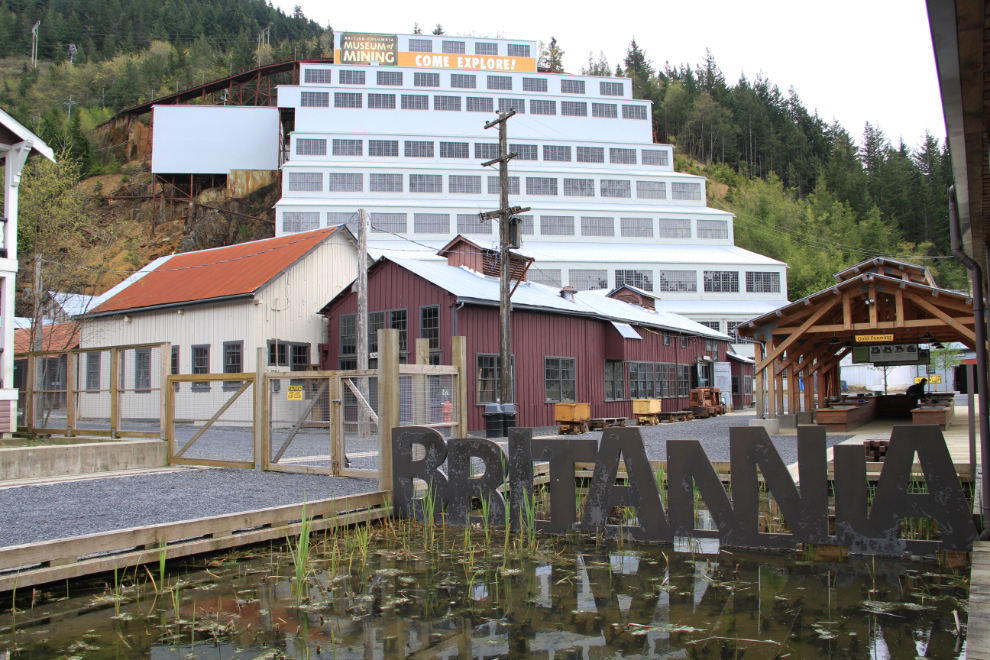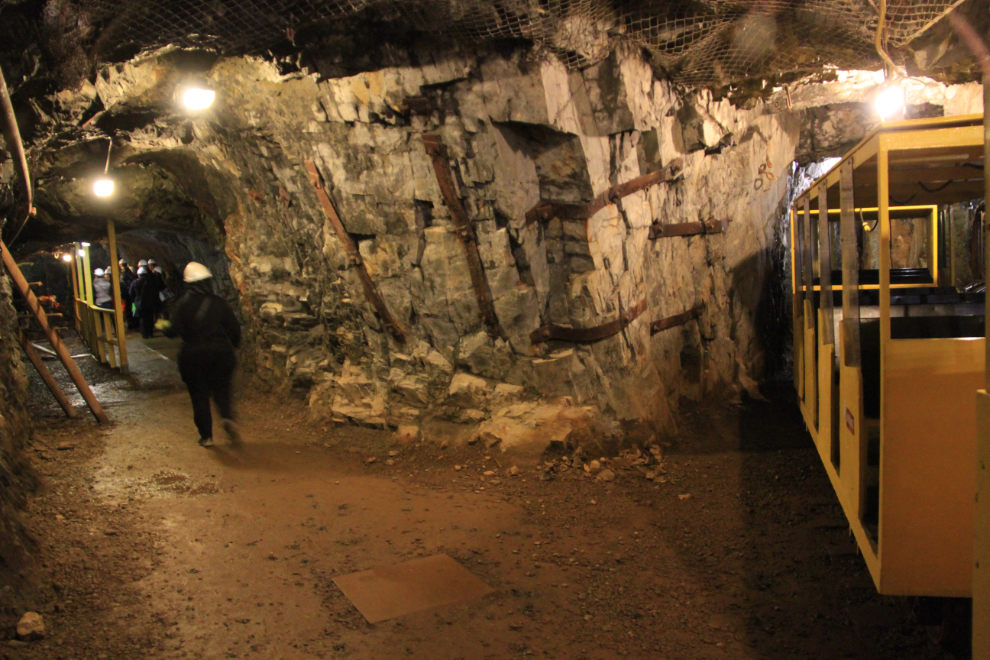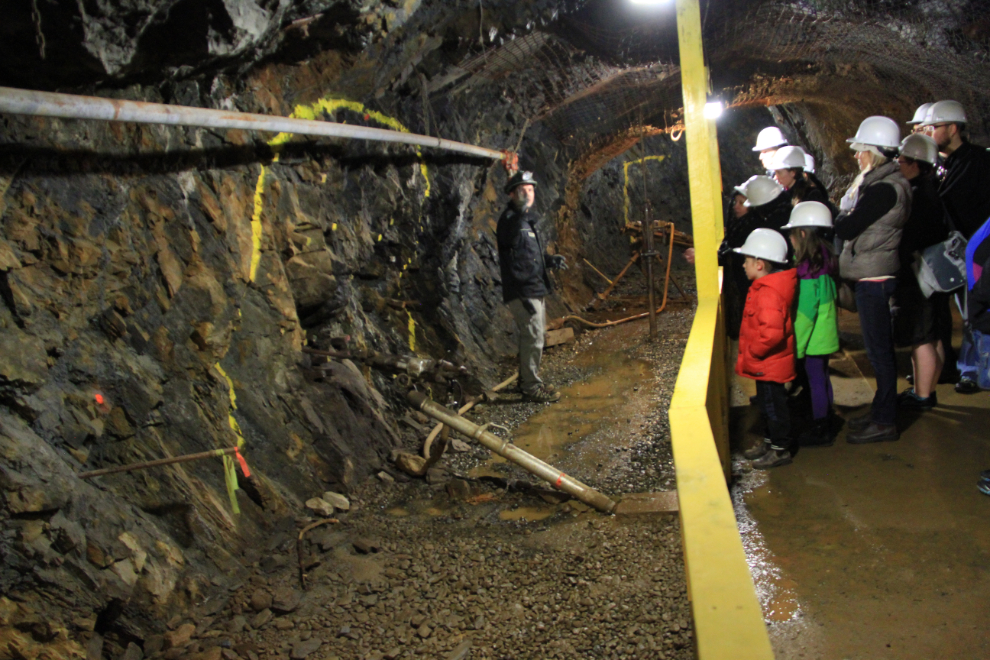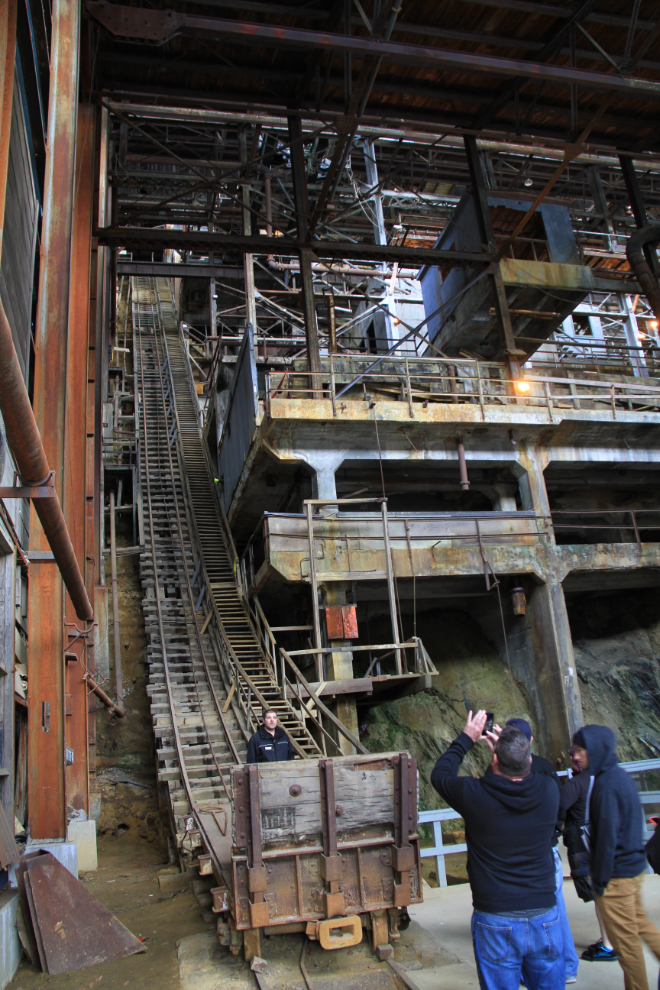Going deep at the Britannia Mine Museum
One of the biggest challenges that most museums have is visibility. How do you get your museum to stand out among the clutter of life, or even among other museums? That, however, is not a problem for the Britannia Mine Museum. Anyone who drives the spectacular Sea to Sky Highway, BC Route 99, along Howe Sound to Squamish, Whistler or beyond, cannot help but see the massive mill that dominates the museum site.
Getting people to actually stop and visit your museum is the next challenge, and a $14.7-million redevelopment project in 2010 has been very successful at doing that. Over 70,000 people a year now stop to learn more about the mine, the people who built it, and their towns. Mining history is one of the subjects that I never get enough of, so it’s always been very easy for the museum to get my attention. but having worked underground at the huge Granduc copper mine in Stewart, BC, in the 1970s, I’m also very fussy about the quality of mining presentations. I recently made my fourth visit to the museum, my first since the redevelopment project was completed, and was extremely impressed by what I experienced.
The entrance to the 10-acre museum property is very impressive, but just gives a hint of what is offered. The museum recommends that visitors allow 1 to 1½ hours for a visit, but exploring its 17 industrial and residential buildings and all the exhibits could probably keep me busy for 3 hours – the 2 hours I allocated for this visit certainly felt rushed.

Tours lasting 45 minutes, most of that time underground, are offered on the half hour between 10 AM and 4:30 PM 7 days a week, and taking one is the best way to get introduced to what the museum has to offer. It’s 12° C (54° F) in the tunnel, though, so dress warmly. A total of 210 km (150 miles) of tunnels were blasted through the mountains at Britannia, and railway tracks for equipment were laid and then removed as work progressed through much of that length.
No still photos can really show you what the underground mine railway feels like, so I invite you to watch a 3½-minute video.
By the time the little train dropped us off for a short walk into a demonstration working tunnel in the mine, I had a good feeling about our guide, Michael Wilcox, and his explanations of the various jobs underground quickly confirmed that he knew his stuff.

The tour guides not only explain about the drilling, blasting and ore removal that took place, they fire up some of the equipment. Hearing the ear-splitting compressed-air diamond drill gives visitors a much better idea of what life would have been like for the miners putting in their shifts at “the face”. This was, and is still today, a tough job.

The next demonstration is of a little tracked scoop that was used to gather up the rock that had been blasted, and to move it outside for sorting and either processing or dumping. This machine, too, is extremely noisy, and while it’s fun to watch for a couple of minutes, imagining what it would like by the end of a long shift adds to visitors’ understanding of the life. The tour up to this point has been in well-lit tunnels, but Michael explained what conditions were really like, and then turned off all the lights and lit a couple of different types of headlamps that the miners wore at various times. That greatly adds to everyone’s understanding, I’m sure – until you experience it, it’s hard to believe what total darkness is like, and what it would be like if your headlamp died.

Although the 20-storey Mill 3 dominates the property visually, it is probably not the dominant experience for most people – the underground part of the tour is. The scale of the mill, though, is quite incredible when you realize that it was built in 1921, in a location that was only accessible by boat until 1956. This was the third mill at Britannia – Mill 1 was built in 1904, Mill 2 in 1916. Mill 3, designated as a National Historic Site in 1988, is one of the last remaining gravity-fed concentrator mills in North America. By 1929, the Britannia Mines were the largest copper producer in the British Empire, and as well as 650,000 tons of copper, the mills extracted 500,000 ounces of gold as well as large quantities of silver, lead, zinc and cadmium from the rock. The structural restoration of Mill 3 in 2007 included replacing many of 14,416 panes of glass that providing much of the light for workers and now for visitors.

The mill is the end of the tour, and I was sorry to leave Michael. A former teacher, he has an engaging presentation style, and he does tours for many of the 10,000 students who visit the museum each year.
Many mining museums spend little if any space or time describing life outside the mine itself, but mining communities were always very interesting in their own right. At Britannia there were 3 communities over the years, and some of the stories connected with them are tragic. The original “Jane Camp”, high in a narrow mountain valley, was wiped out by a rock and snow slide in March 1915, killing 56 men, women and children. What was thought to be a safe location 2,000 feet below Jane Camp was chosen for “Mount Sheer” (a.k.a. “the townsite”), but only 6 years later another 37 died there in a massive flood. The final community, Britannia, was built along the shore of Howe Sound.
The tragedies are not dwelled upon in the museum, but provide an important perspective to the many other stories in the large “A-Z Britannia” display in the former Administration Building. With everything from historic photo albums and love letters to artifacts such as cameras and household items, it does an excellent job of showing what day-to-day life was like for miners and their families at various periods.

To get into spirit of mining, there’s also gold panning available, and for more variety, the Beaty-Lundin Visitor Centre, the main exhibit hall, features an interactive “Kids Playce” area, the Canadian Mining Hall of Fame, theatrical mining displays, a mineral gallery and a gift shop.
Whatever your age, whether you’re by yourself or with your family, I’m sure that you’ll find the Britannia Mine Museum to be fascinating. I’ll certainly be back for an even longer look as soon as I get the opportunity.
This article was originally written for the ExploreBC blog on July 2, 1014 – the blog was closed in 2017.
